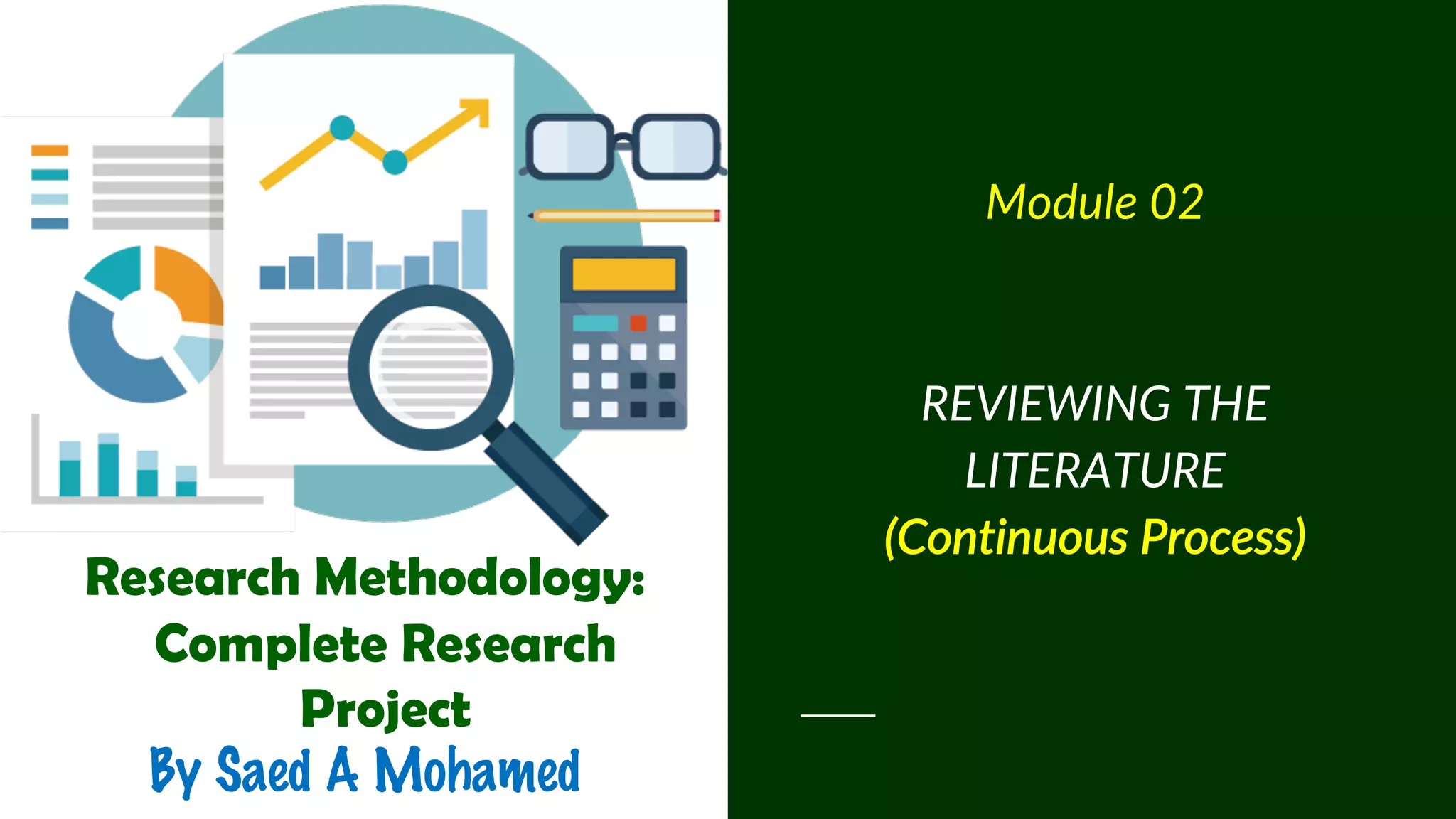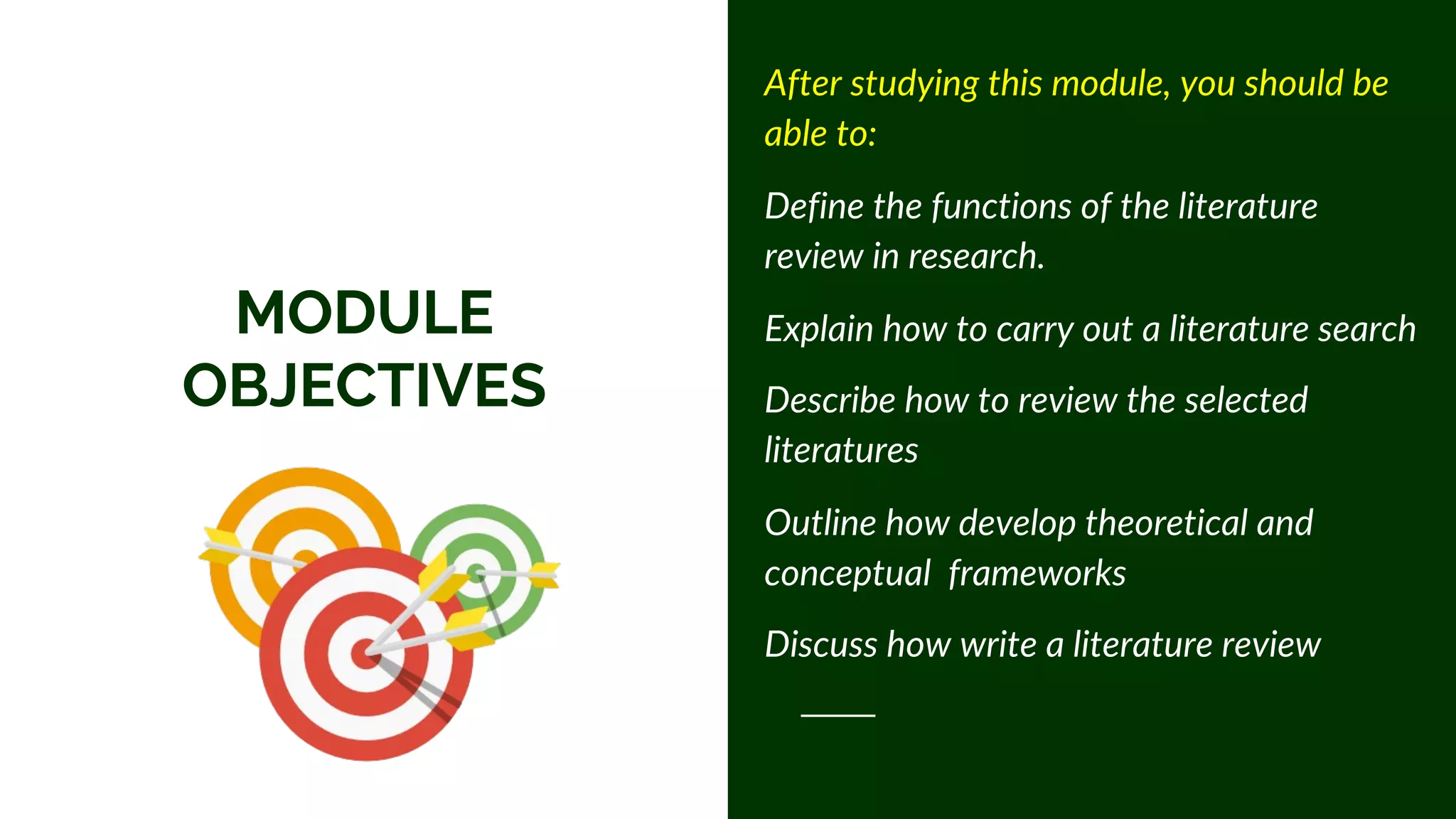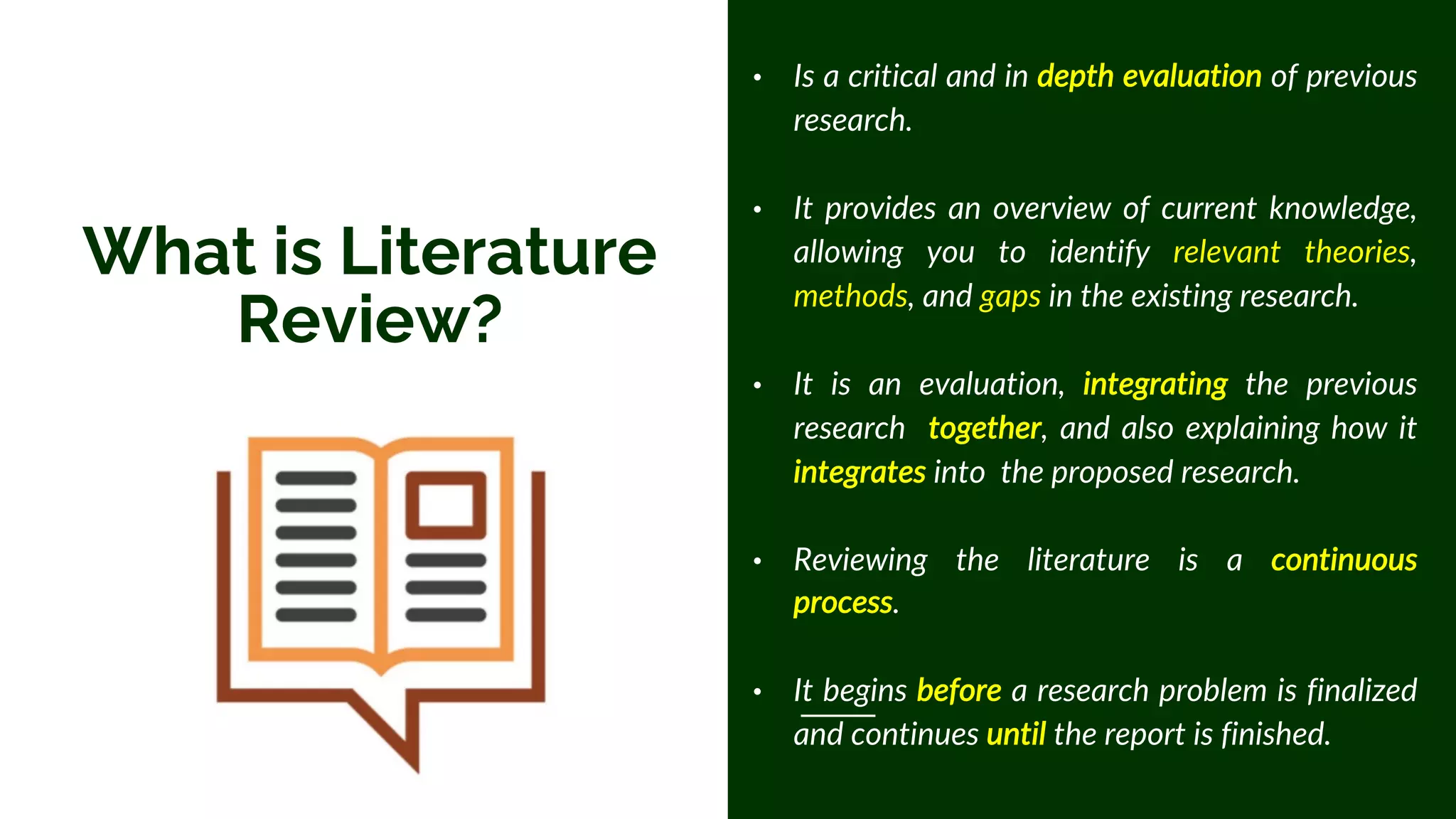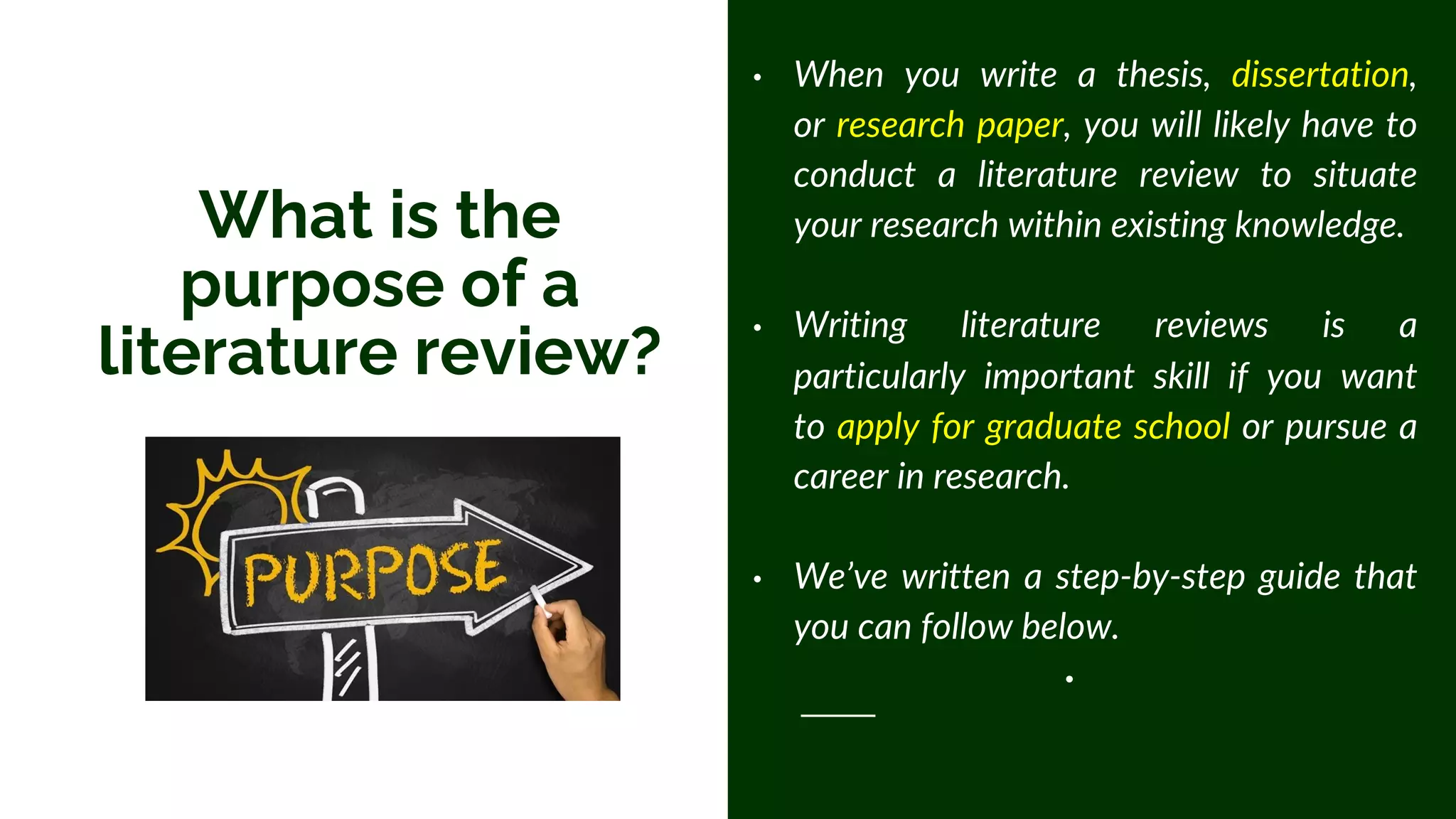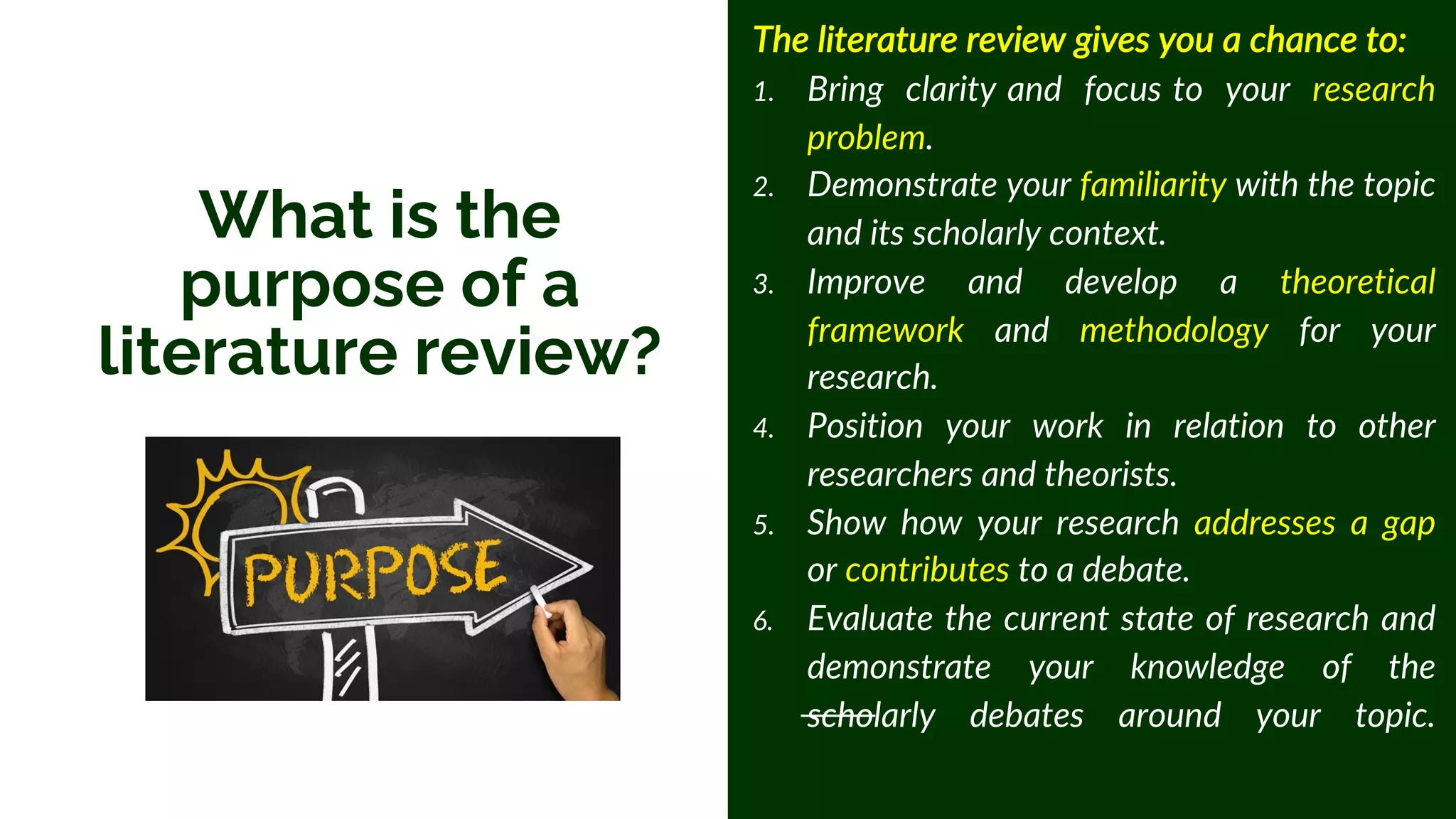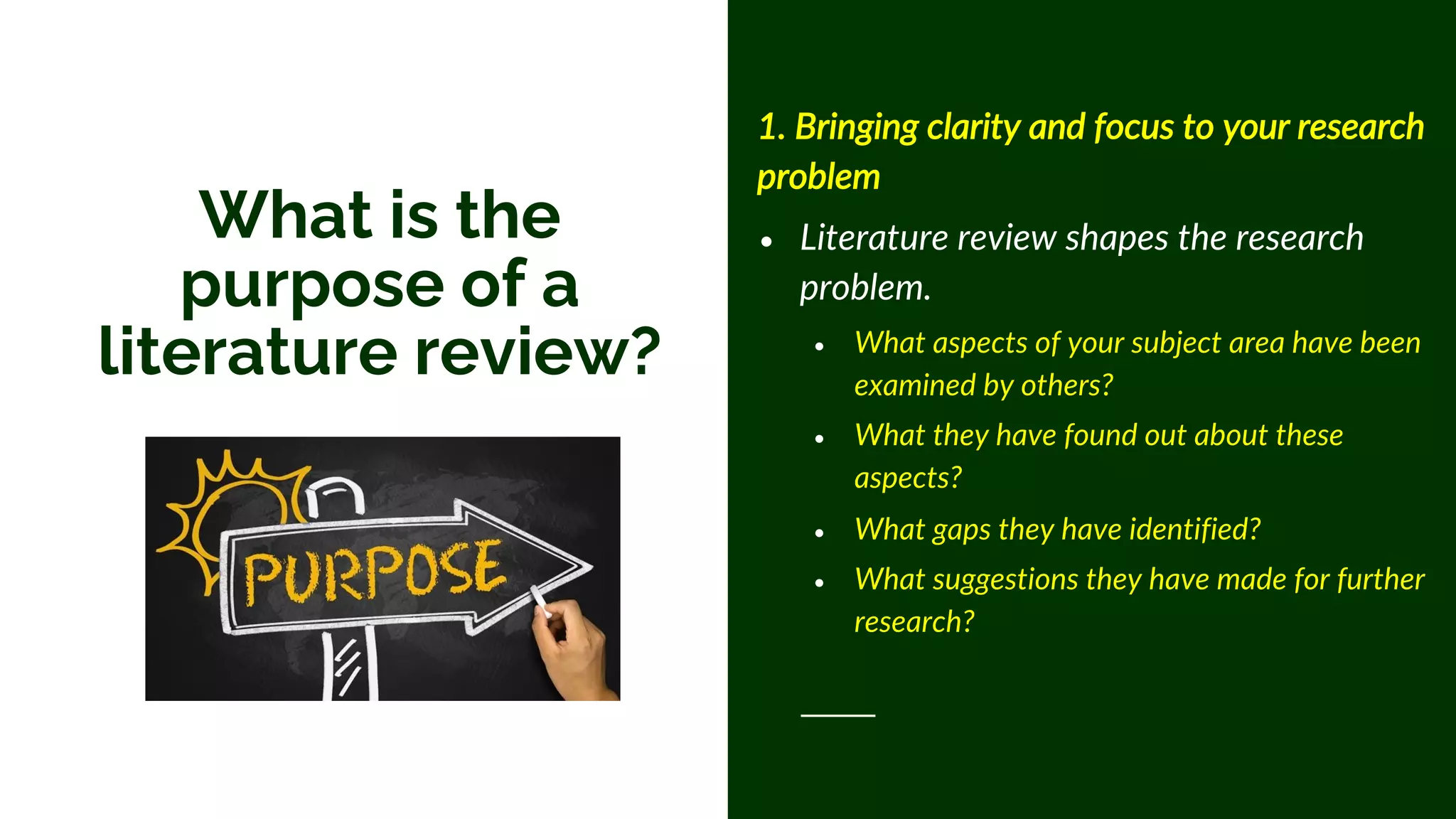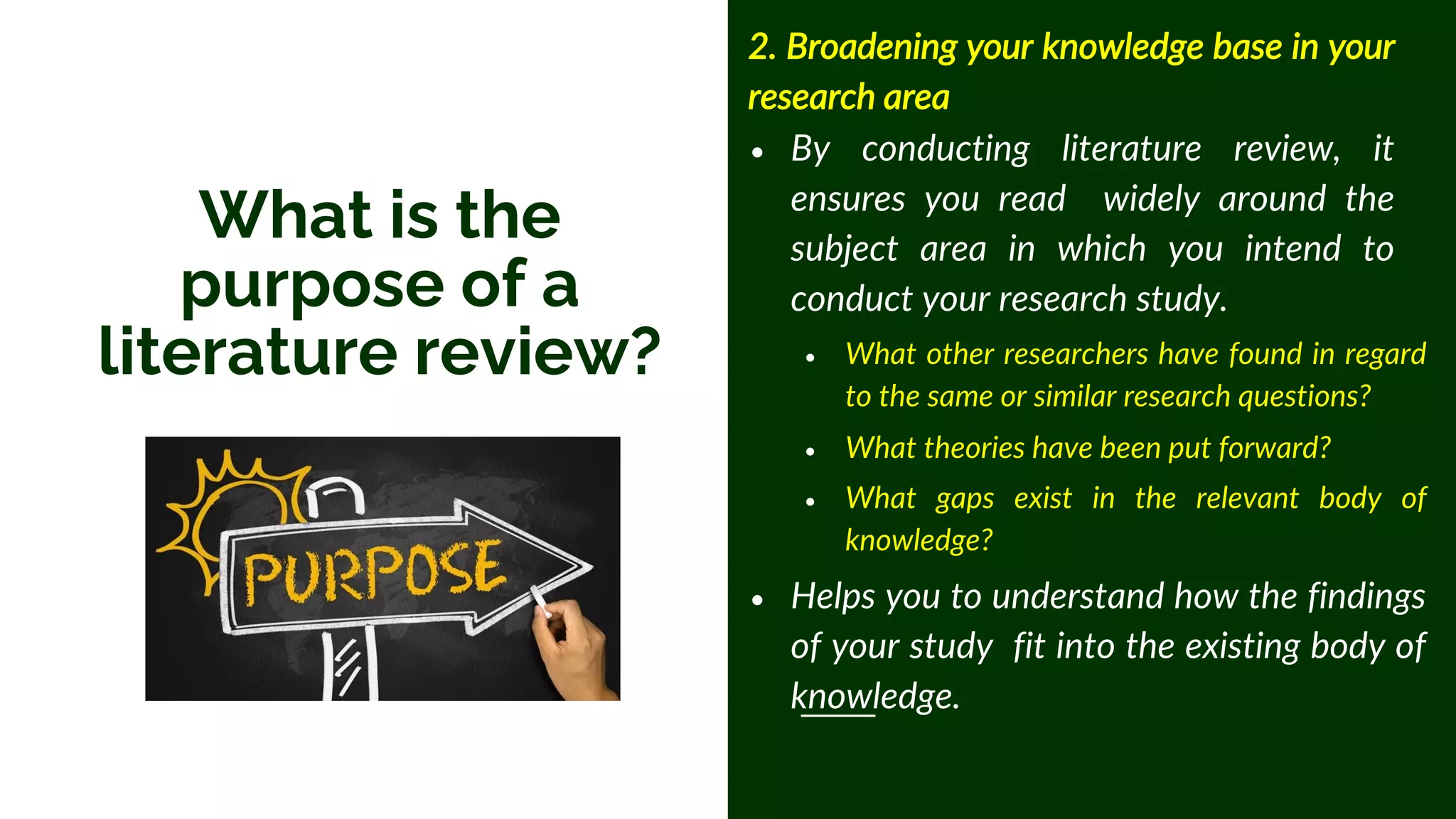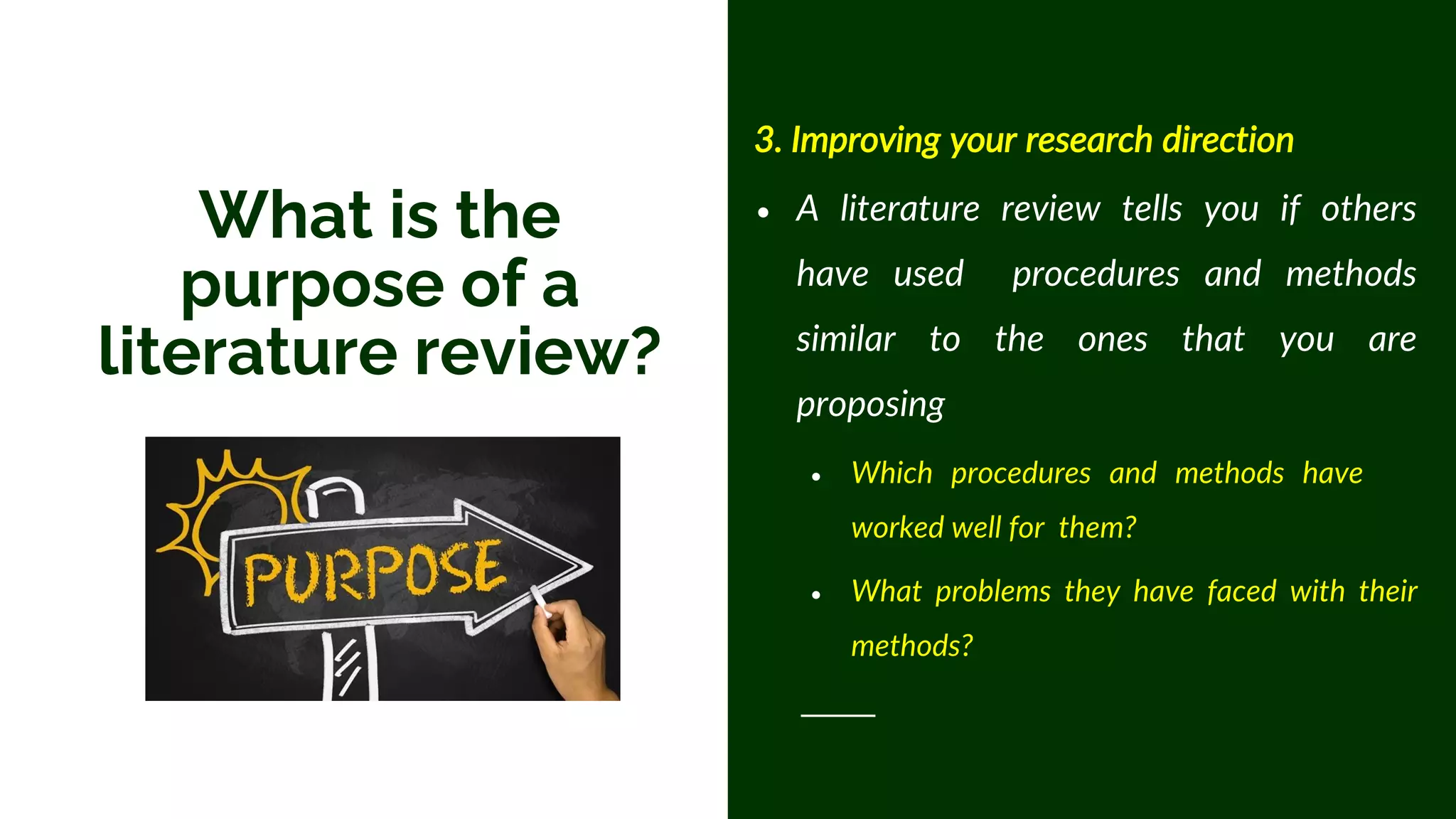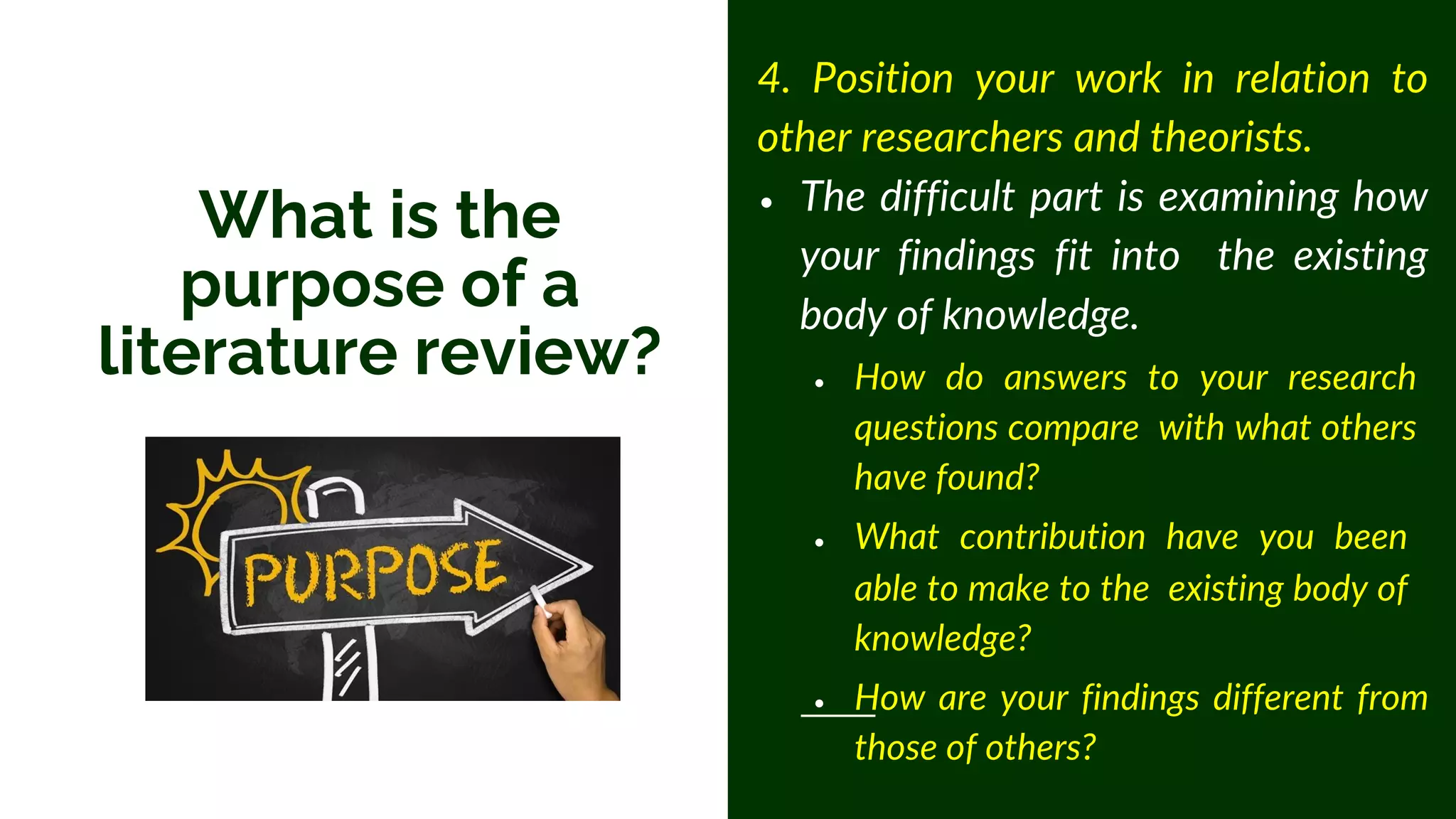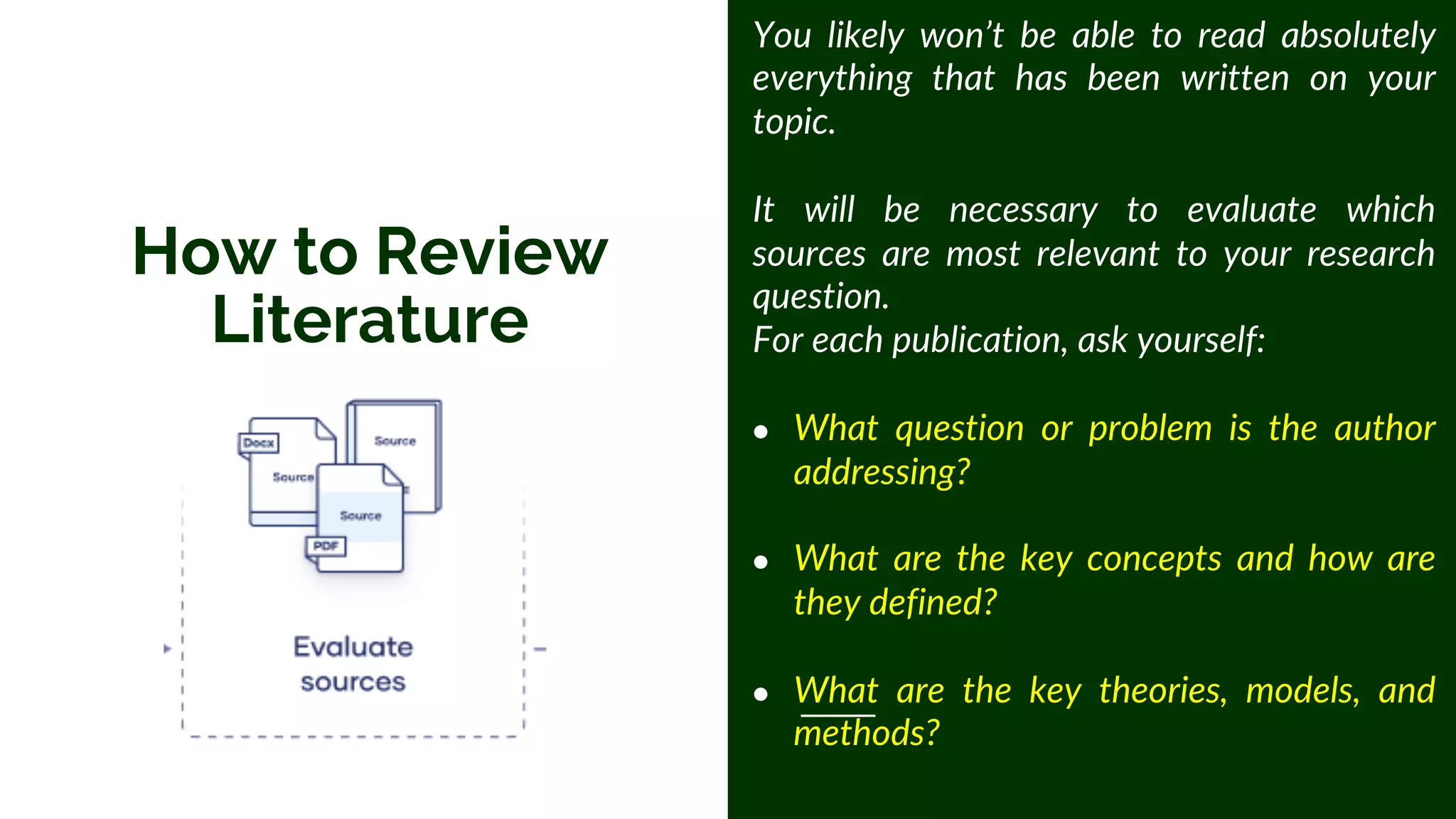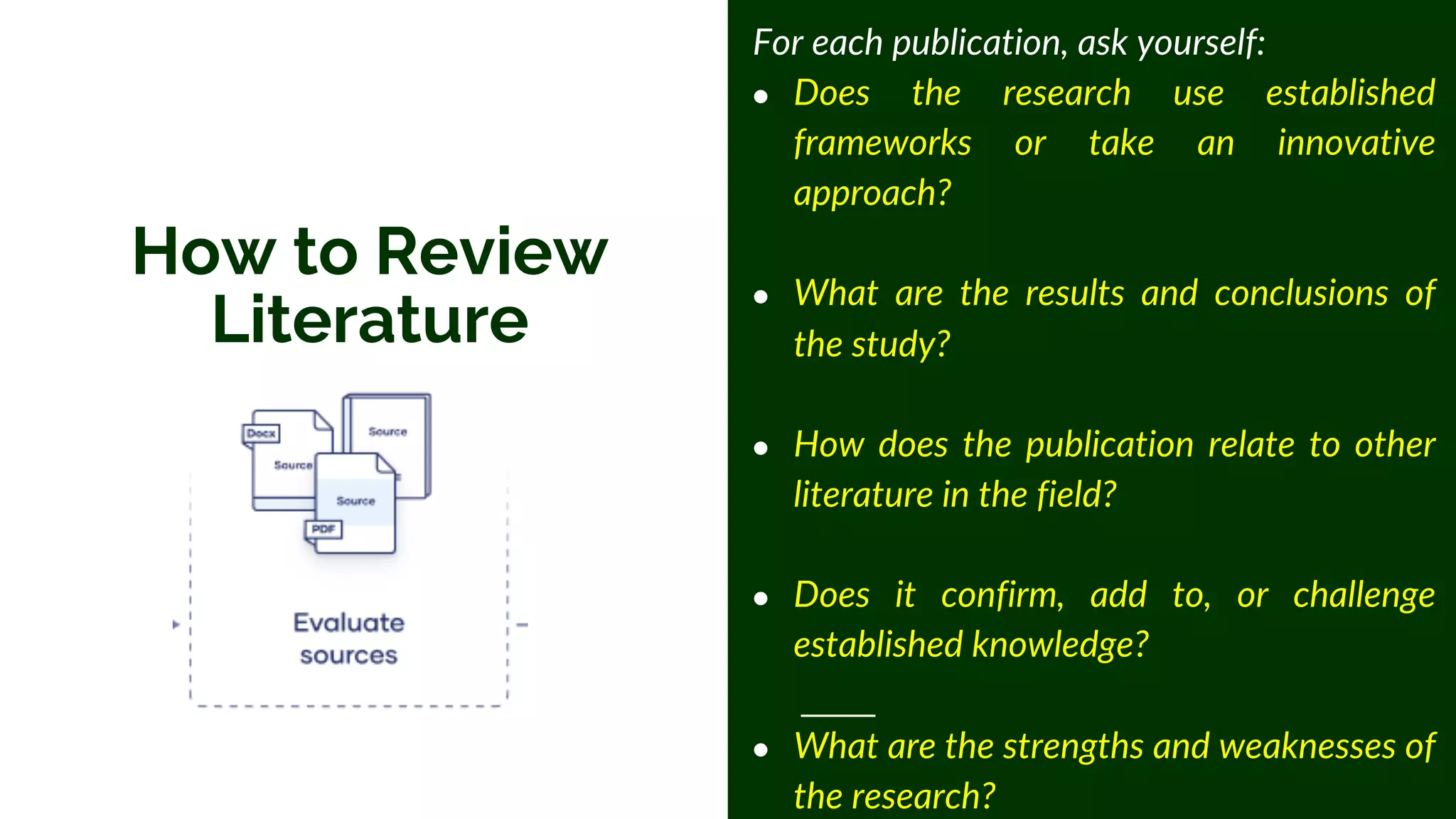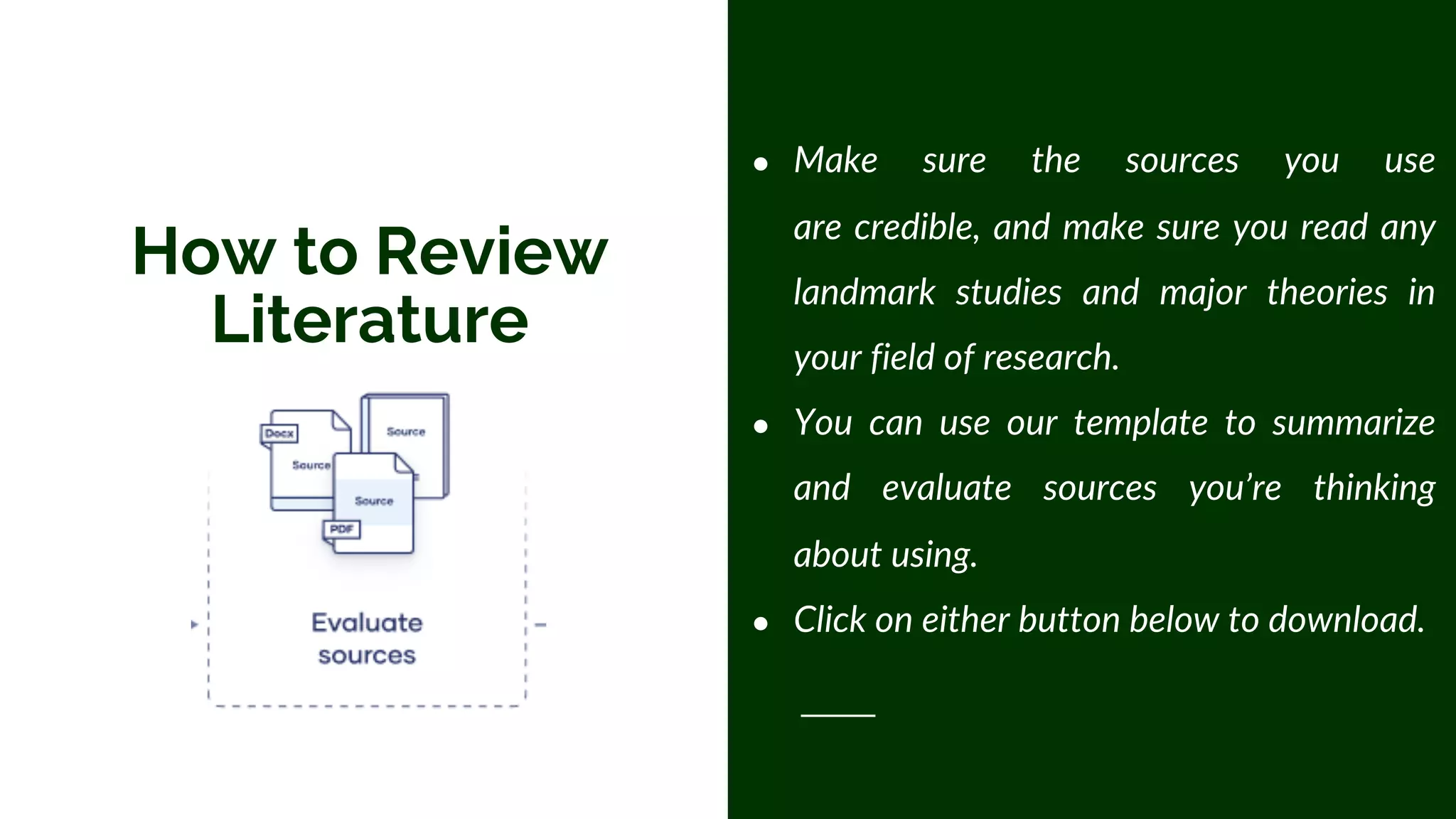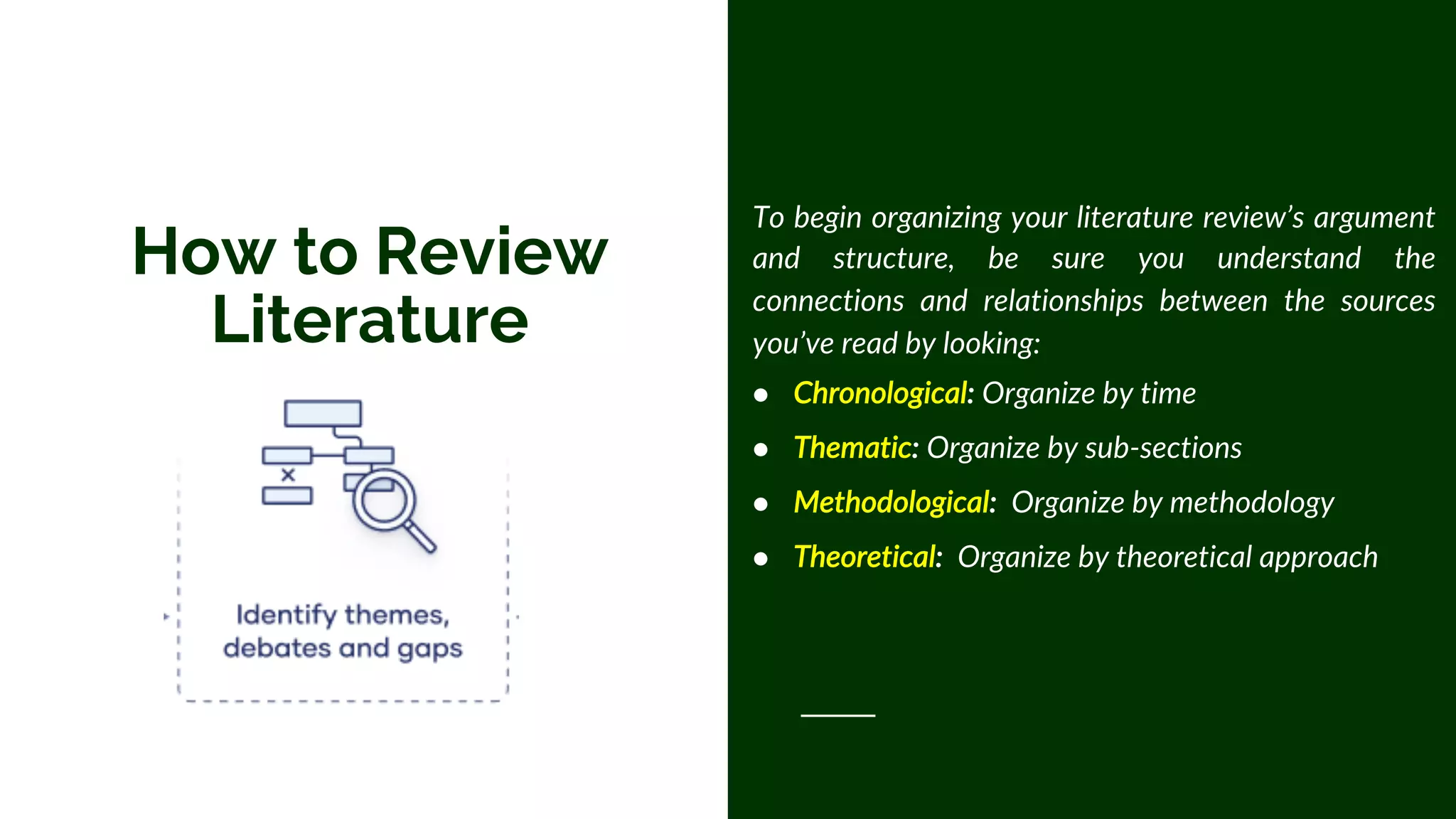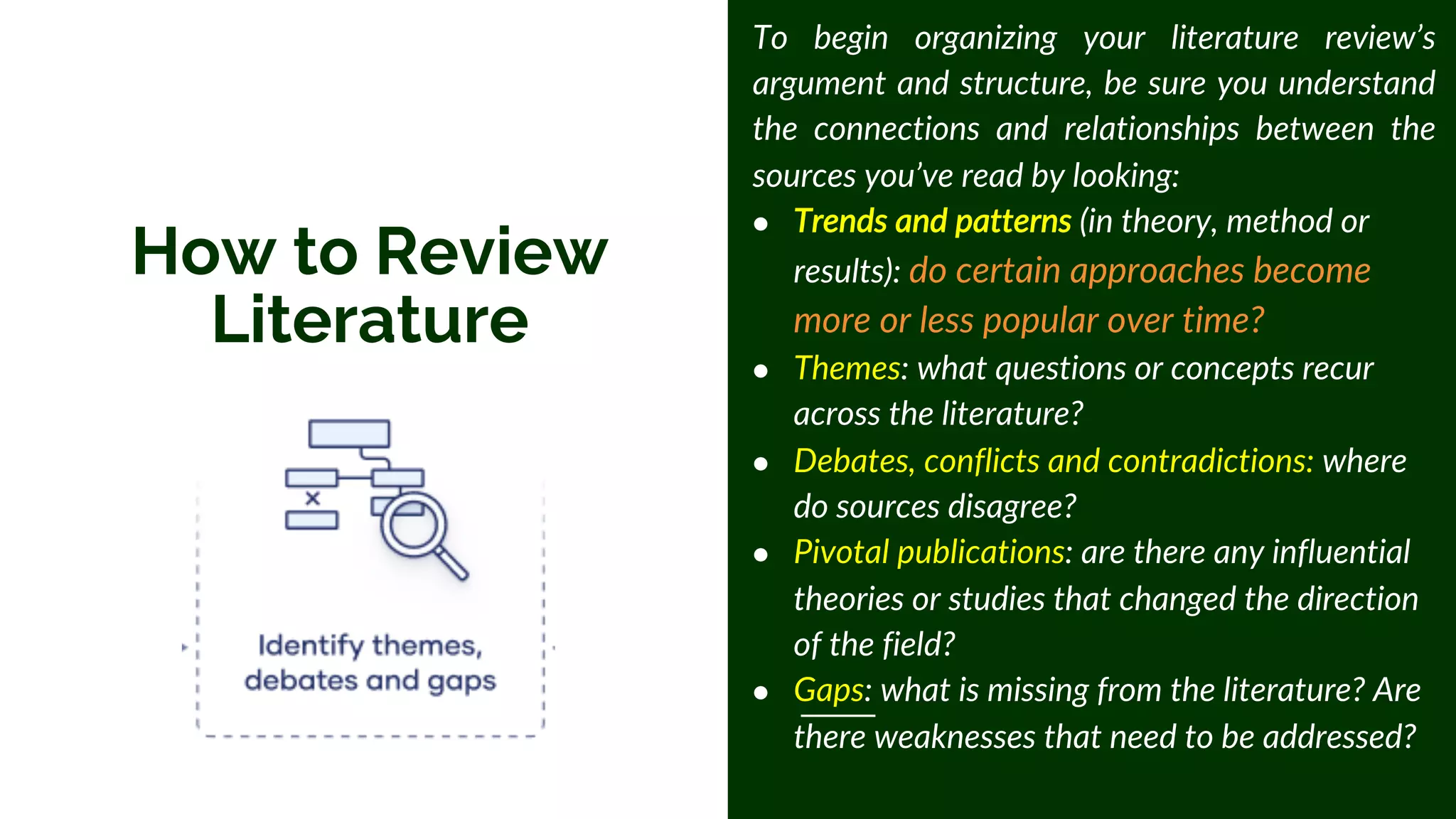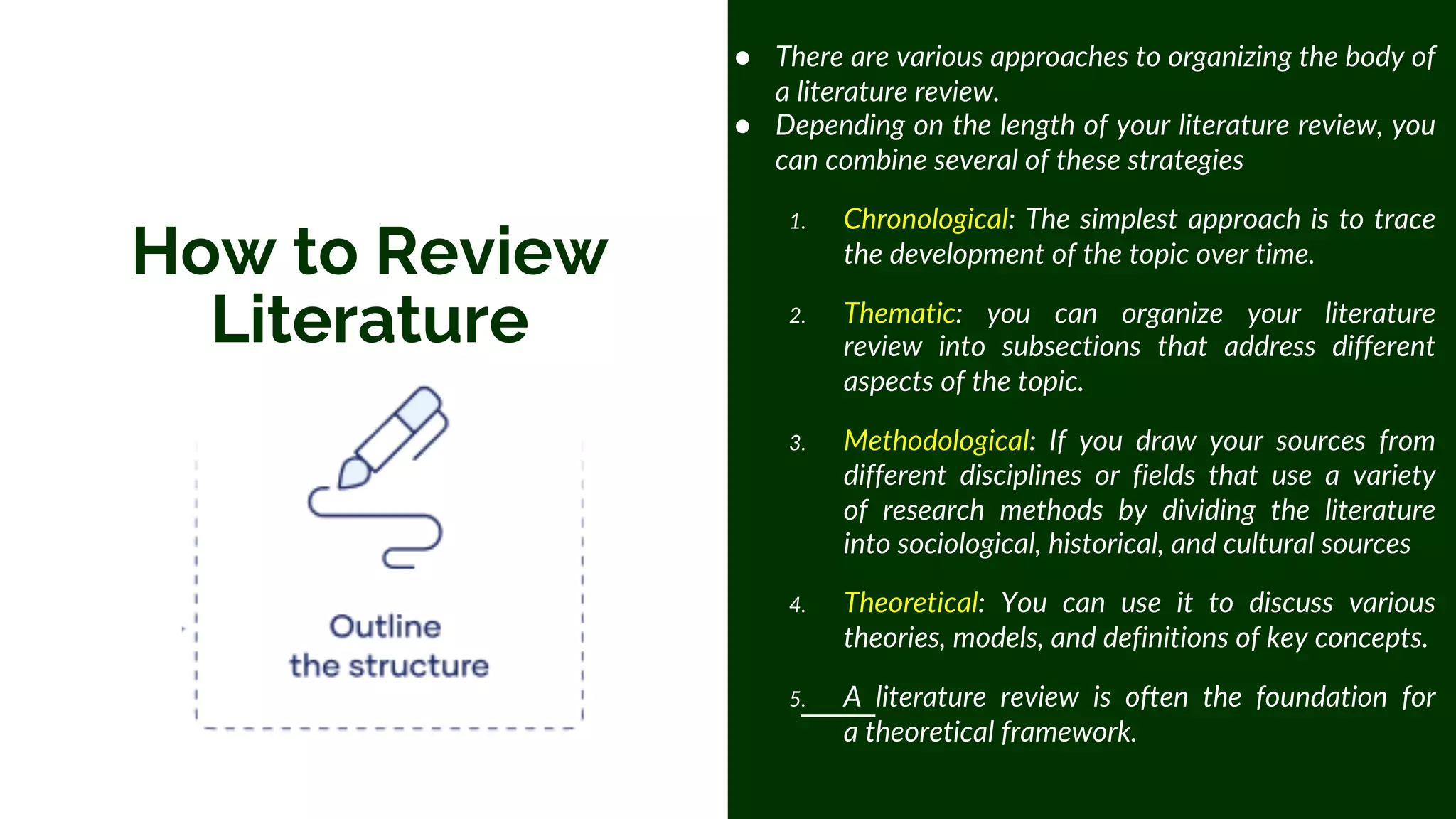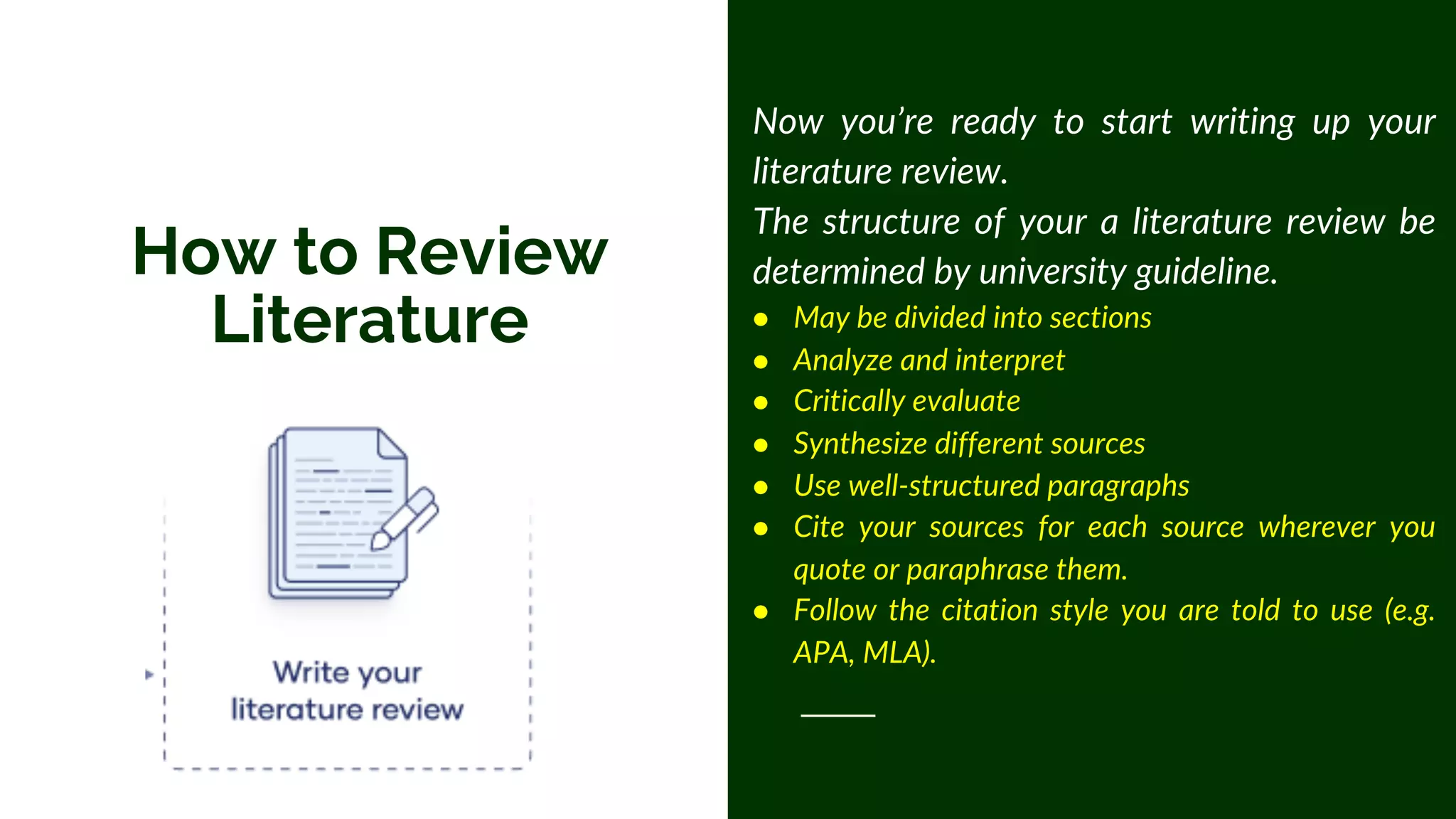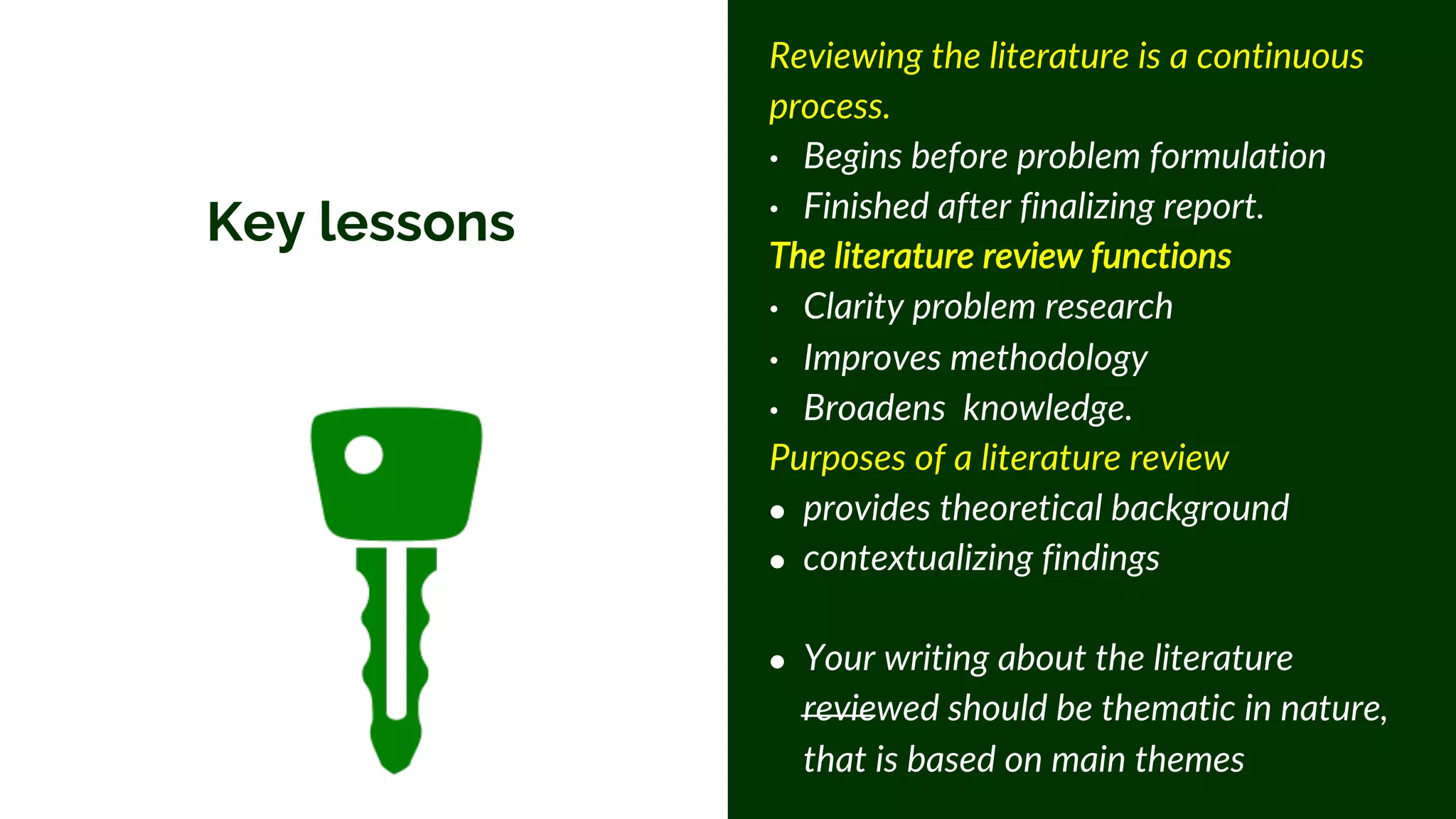This document provides guidance on conducting a literature review for research. It defines a literature review as a critical evaluation of previous research that allows one to identify relevant theories, methods, and gaps. The purpose of a literature review is to situate a research project within existing scholarly knowledge. It discusses the key steps of a literature review: searching literature, evaluating sources, identifying themes and gaps, outlining the structure, and writing the review. The document emphasizes that a literature review should analyze, synthesize and critically evaluate sources to demonstrate knowledge of scholarly debates.
